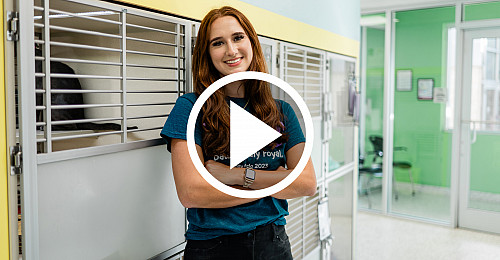Freshman Year—Welcome to high school!
- Build strong academic, language, mathematics and critical thinking skills by taking challenging courses (Honors, Pre-AP). A diverse course curriculum will help you learn about a variety of subjects and possibly introduce you to new areas of interest. Colleges will evaluate your freshman grades when you apply for admission.
- Don’t be afraid to ask questions of teachers and counselors. They are there to help!
- Get involved in extracurricular activities that you are excited about, both in school and within the community.
- Surf the web and look at college websites. You can learn about various schools, what they offer and their admission requirements.
Spring
- Create an informal resume of academic achievements, awards, extracurricular activities, community service hours, and any other activities. It will come in handy when you’re filling out college applications or creating a formal resume.
- Plan and register for your sophomore year schedule. You have until the end of the academic year to make changes.
Summer
- Going on a family vacation? Is there a college nearby? Consider taking the time to visit college campuses. Seeing campuses will give you a better idea of what is important to you in a college, e.g. size, location, urban vs. rural, etc.
- Create an email to be used for all college communications (e.g., PattiPirateCollege2024@gmail.com) and check it regularly. Use it for all standardized test scores and college-related forms and applications that you complete.
Sophomore Year—Concentrate on academic preparation and develop basic skills
September
- Consider taking the PSAT/NMSQT exam, as offered by your high school.
- Learn good study habits now!!! Good study skills will take you through high school and four years of college.
- Continue involvement in extracurricular activities in school and within the community. Look for future leadership opportunities.
October
- Don’t allow extracurricular activities to weigh you down and affect your grades. Balance is important in the eyes of an admission office.
April
- Create a “College Wish List” that includes criteria of your ideal school. Discuss this with your parents so they are aware of your likes and dislikes. Consider: size, location, cost (tuition and expenses), curriculum and academic program, type of school (public, private, residential, commuter, two- or four-year, religious affiliation, etc) and extracurricular programs.
- Gather information about colleges that interest you. Speak with college representatives at a spring college fair or visit.
- Plan and register for your junior year schedule. You have until the end of the academic year to make course changes.
May
- Consider a summer course, program or activity that will help you reach academic or personal goals.
- Take Advanced Placement or International Baccalaureate exams, as appropriate.
Junior Year—Begin the college selection process
September
- Sign up for PSAT/NMSQT exam, which normally takes place in October. Meet with your school counselor to review your courses for this year and plan for your senior year; review transcript to make sure all course information and personal data is correct.
- Attend a college fair or participate in virtual college programming to gather information about colleges that you are considering and participate in college visits hosted by your high school. These activities will allow you to learn about various types of colleges and universities.
October
- Take PSAT/NMSQT to prepare for SAT and National Merit consideration for scholarships from across the country.
- Create your resume listing academic achievements, activities, clubs, sports, volunteer and job experience. Be sure to record your involvement in terms of hours per week and weeks per year. This will come in handy when you are completing college and scholarship applications.
January
- Create an initial list of colleges you would like to explore; discuss with your guidance counselor.
- Sign up to take the SAT and/or ACT in the spring/summer of your junior year.
- Check your college email account regularly. You will receive invitations to programs as well as information about colleges. Unsubscribe from those for which you have no interest.
February
- Tour campuses in person, virtually, or in both formats when classes are in session. Contact the admissions offices to set up tours, class visits, etc.
March
- Request information from the colleges on your list and evaluate the literature sent to you.
- Have the conversation about paying for college with your parents. Every college has a net price calculator on their website which allows you to enter some preliminary financial information to get an idea of how much it would cost to attend.
April
- When selecting your senior courses, be sure to challenge yourself.
- Look into summer jobs, continue to evaluate colleges and begin to eliminate some choices from original list.
May
- Take Advanced Placement and International Baccalaureate exams (if appropriate).
- Consider enrolling in an academic course at a local college, pursuing a summer school program or volunteering this summer.
- Plan to visit several colleges during the summer.
Summer
- Applications typically open August 1, consider working on application basics prior to the start of your senior year.
- Continue researching colleges and narrow down your list to 5-10 top schools, considering a mix of both academic profile and ability for your family to afford.
- Make a file for each college and gather information about requirements, important dates and deadlines, visit days, financial aid, and campus life.
- Write drafts of college application essays. You will thank yourself later if you get ahead now!
- Create/finalize your resume listing academic achievements, activities, clubs, sports, volunteering and jobs.
- Begin to gather necessary information for applications; set reminders for important deadlines.
Senior Year—Apply to colleges. Make decisions. Finish high school with pride in yourself.
September
- Explore scholarship options.
- If you are interested in taking the SAT or ACT again, try to sign up for tests offered in October or November in order to receive your scores in the beginning of the college application process.
- Meet with your counselor to be sure that your list includes colleges appropriate to your academic record. Be reasonable in terms of the number of schools and feasibility of being admitted.
- Inquire about local scholarships and begin reviewing scholarship criteria; check high school counseling websites.
- Contact the colleges still on your list for application information. Remember that almost all colleges charge application fees—another good reason to refine your list to a reasonable number.
- Plan visits to colleges. Visit as many campuses on your list as possible. The best time to do so is when classes are in session. Be sure to ask about admission procedures and real costs (including books, fees, transportation and living expenses).
- Start submitting college applications. First round of deadlines are between October 15 and November 1. Pay attention to Early Action, Priority, and/or Early Decision deadlines. Keep copies of your essay for your records.
- Research test optional institutions and see if you need to submit scores or why you should.
- Request test scores through official testing agencies - Collegeboard.org for SAT and actstudent.org for ACT. Request these a few weeks before the deadlines.
- Consult your school counselor again to review your final list of colleges.
October
- Attend a local/regional college fair and speak to representatives of those colleges to which you will apply; speak with representatives who visit your high school.
- If you are taking the SAT or ACT, make sure to have scores sent to colleges on your list.
- Line up your teacher and counselor recommendations; ask early to give time for a thoughtful recommendation.
- Complete the Free Application for Federal Student Aid (FAFSA) found at FAFSA.gov
November
- If you are taking the SAT or ACT, make sure to have scores sent to colleges on your list that require scores.
- Be sure that first quarter/semester grades are strong.
- Continue submitting applications to colleges.
December
- Submit your last college application.
- If you have applied Early Decision, you should have an answer by now.
January
- Keep working on your grades. These are important for admission as well as for scholarships.
- Request that transcripts of your first semester grades be sent to applicable colleges.
February, March, April
- Monitor your applications to be sure that all materials are sent and received on time.
- Enjoy your final year of high school, but don’t catch senioritis!
Before May 1
- Decide on the one college that you will attend. Send in your tuition deposit and notify the other colleges that accepted you that you have selected another college.
MAY
- Take Advanced Placement or International Baccalaureate exams (if applicable) and send scores to your college of choice.
June-July
- Request that your counselor send your final high school transcript to the college you want to attend.
- Look for information from the college about housing, your roommate(s), orientation, course selection, etc.
August-September
- Pack for college. Leave for your new home away from home…. and have a great first year!














